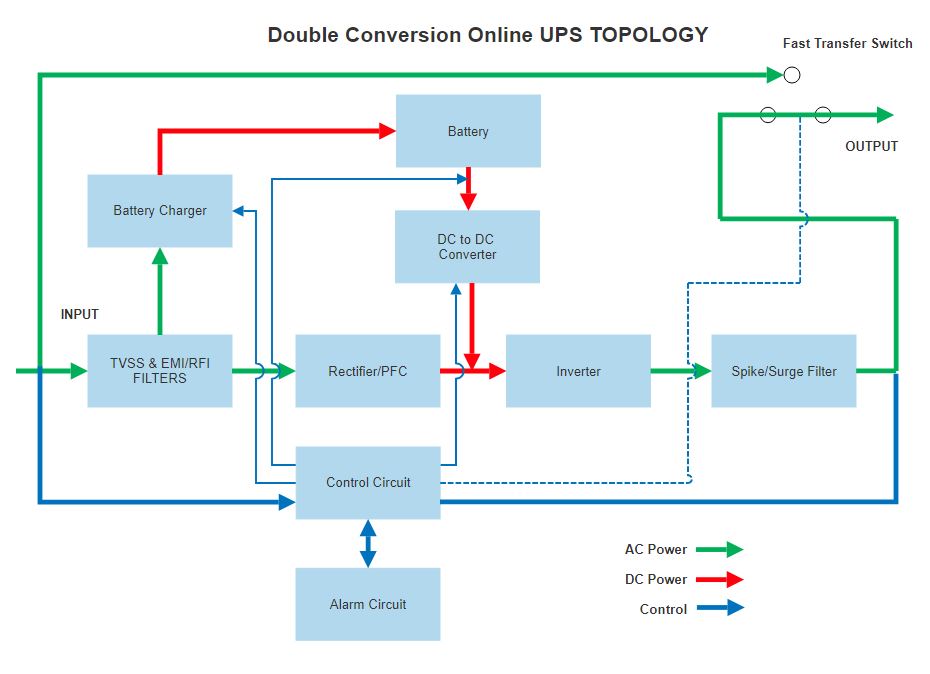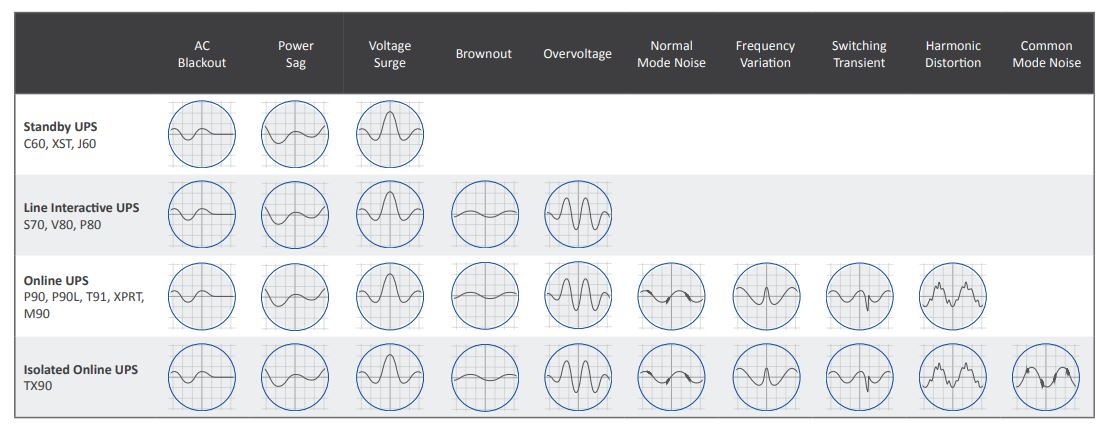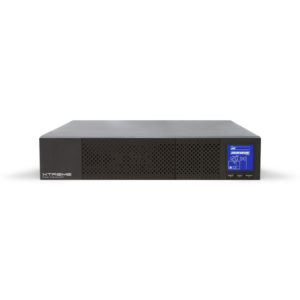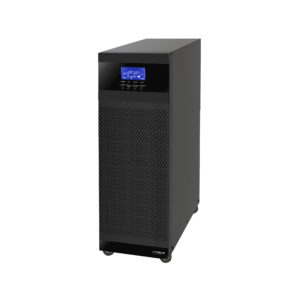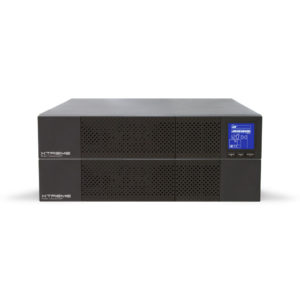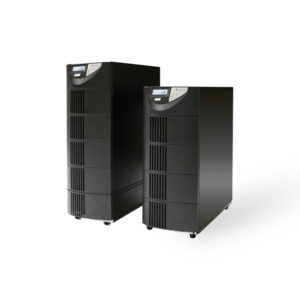Selecting the right Laboratory and Scientific UPS
An uninterruptible power supply (UPS) provides two main functions when  protecting laboratory and scientific equipment. The first is to provide clean and stabilized electrical power to sensitive electrical equipment. Second is to provide instantaneous battery backup power in the event of brown or blackouts. This article will cover the types of UPS systems recommended for this application and important areas to focus on when planning power protection implementation.
protecting laboratory and scientific equipment. The first is to provide clean and stabilized electrical power to sensitive electrical equipment. Second is to provide instantaneous battery backup power in the event of brown or blackouts. This article will cover the types of UPS systems recommended for this application and important areas to focus on when planning power protection implementation.
Incoming power issues
Electrical power issues like spikes, voltage sags, harmonic distortion, electrical noise, can wreak havoc on sensitive electrical equipment. These issues can prematurely age, cause calibration issues, damage and in some cases destroy equipment. These “unseen” electrical issues can cost thousands to millions of dollars through the loss of productivity, inventory/data and in the repair and or replacement of this costly equipment.
Roughly 75% of all electrical issues come from within the facility infrastructure itself. If a building is fifteen years or older, it may contain faulty and or outdated electrical wiring and or power transmission equipment. Additionally, large and sudden power draws from surrounding equipment can also affect the power quality of incoming power. The remainder of electrical related issues come from outside factors such as local power providers performing grid switching, equipment breakdowns to severe weather events.
Power loss issues
During complete loss of power, a UPS is designed to provide continuous battery backup electrical power to the connected equipment. This battery power can provide seconds, minutes or hours of battery backup times depending on customer requirements.
backup electrical power to the connected equipment. This battery power can provide seconds, minutes or hours of battery backup times depending on customer requirements.
By providing backup electrical power, the scientific equipment can continue to operate and complete its processes versus being abruptly shut down. This becomes painfully apparent, after losing hours of work, delays schedules, and possibly destroying irreplaceable test samples.
If the UPS batteries drain before utility power is restored (computer-based equipment) can be gracefully shut down by the UPS. The UPS can communicate to target equipment via USB or across a computer network. This feature provided valuable options if your system operates without users being present or if a power outage happens after working hours.
Types of UPS Systems
While there are several different types of UPS systems, for backing up and protecting laboratory and scientific equipment, this article will discuss the Double Conversion Online and Isolated Online UPS topologies. These two types of UPS systems provide the highest form of power protection from a UPS system and a perfect protection/backup solution for laboratory/scientific equipment.
The Double Conversion UPS topology isolates critical electrical equipment from directly connecting to the commercial power grid. Incoming AC power to the UPS is stabilized and filtered as it is converted to DC power. The DC power routes to an internal battery charger/battery and then to an inverter converting the DC power back clean and stable pure sine wave AC power, ready for distribution to target equipment.
Isolated Online
The Isolated Online topology takes the Double Conversion Online topology one step further by integrating a galvanically isolated transformer. This feature eliminates neutral-to-ground and common mode noise as well as neutral loops and protects from other types of faults. This topology is used where grounding issues are common and where harmonics created by other equipment could disrupt the function of critical equipment.
Please see the chart below for more information on the power protection benefits between Double Conversion and Isolated Online UPS systems.
UPS Power Capacity
A UPS must be sized correctly to ensure it provides adequate power protection. In some cases, the manufacture of your equipment may provide the power requirements for a UPS. While in other cases gathering data and correctly calculating operating power requirements for your equipment may be required. Three required information is generally found on the equipment’s’ name plate, user manual or manufactures website.
Inrush Current
If the Laboratory/Scientific equipment contains pumps, motors or compressors, it is important to identify the equipment’s inrush current. During the first few moments of start-up, these systems require sometimes as much as 20x the normal power capacity. When properly sizing a UPS, this is a critical factor in determining the UPS’ overall power capacity. As an example; an application where the UPS is calculated for capacity of 5000W but has an in-rush current of 50a would require the UPS sized at 6000W. Battery backup time would use the lower 5000W for runtime calculations.
Collecting the needed data can be confusing at times, and if any additional information is required, please do not hesitate to contact our sales department for more details.
UPS Battery Backup Time
Once the total wattage/capacity of the system(s) requiring backup power is calculated, a battery configuration can be calculated. The UPS internal batteries can supply several minutes of battery backup time. Depending on your backup time requirements, additional external batteries can be added to increase backup runtimes. These batteries can add additional minutes to hours of backup electrical power.
UPS Power Input and Output
When specifying a UPS for laboratory equipment, it’s important to know the type of input power that will be provided to the UPS. Power input can be single-phase or three-phase power (depending on UPS model). These UPS systems can be hardwired or use a plug/receptacle for connection to commercial power input. When required, transformers can be used to “step-up” or “step-down” input power to the UPS when required.
UPS power output can also be single or three phase power. When collecting data, it is important to note the type of plugs for each piece of equipment. Select UPS systems can be provided with a mix of required power outlets. As with power input, a transformer can also be provided to “step-up” or “step-down” power output.
Receptacle Identification
If your incoming power information is not known off hand, most information needed can be gathered by the outlet type the UPS will be plugged into. The receptacle chart will help identify if the incoming power is 120V or 200V, the line amps and receptacle type.
UPS Form Factors
UPS systems for laboratory or scientific equipment can be freestanding, or rack/wall mounted. Most laboratory/scientific UPS applications are freestanding UPS systems as the system is installed next to the equipment being backed up.
Customers who utilize a 19” equipment rack have the ability to rack mount the UPS and external batteries if required. Rack-mounting allows for the optimization of space, allowing the customer to “centralize” their equipment in one location. An equipment rack can provide for additional cooling, cable management as well as additional security for the equipment.



